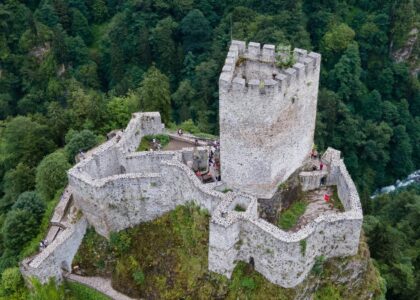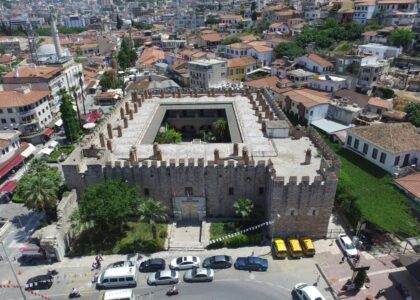The Basilica Cistern, known in Turkish as Yerebatan Sarnıcı (“Sunken Palace”), is the largest of the ancient subterranean water reservoirs beneath Istanbul.1 Commissioned by the Byzantine Emperor Justinian I, its construction was completed in the 6th century, around 532 AD, to supply filtered water to the Great Palace of Constantinople and other buildings on the First Hill.
This massive underground chamber, measuring approximately 138m by 65m, is often described as an underground cathedral due to its scale. Its vaulted ceiling is supported by a “forest” of 336 marble columns, arranged in 12 rows of 28. Many of these columns were repurposed from earlier Roman structures, giving the space a diverse architectural character.
Among the most striking features are the bases of two columns in the northwest corner, which feature carved heads of Medusa. These are believed to have been brought from a late Roman building, with one placed on its side and the other inverted, perhaps to neutralize the mythical Gorgon’s petrifying gaze or simply to fit the column structure.
After the Ottoman conquest, the cistern was largely forgotten until its rediscovery in the mid-16th century. It continued to supply water, including to the Topkapı Palace gardens, before eventually falling into disuse. Today, beautifully lit and partially filled with water, it stands as a major tourist attraction and a UNESCO World Heritage Site, offering a mysterious glimpse into Byzantine engineering.






